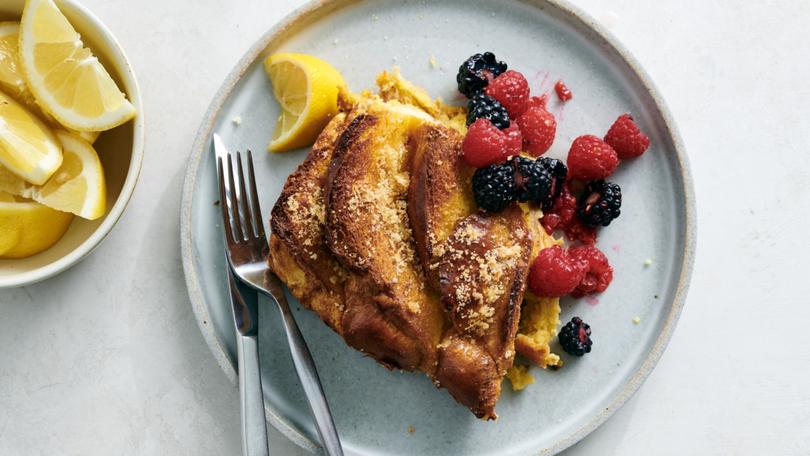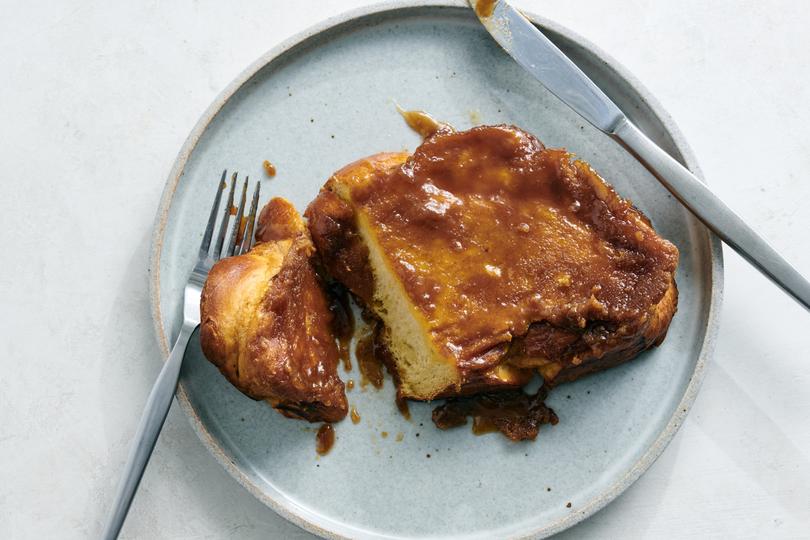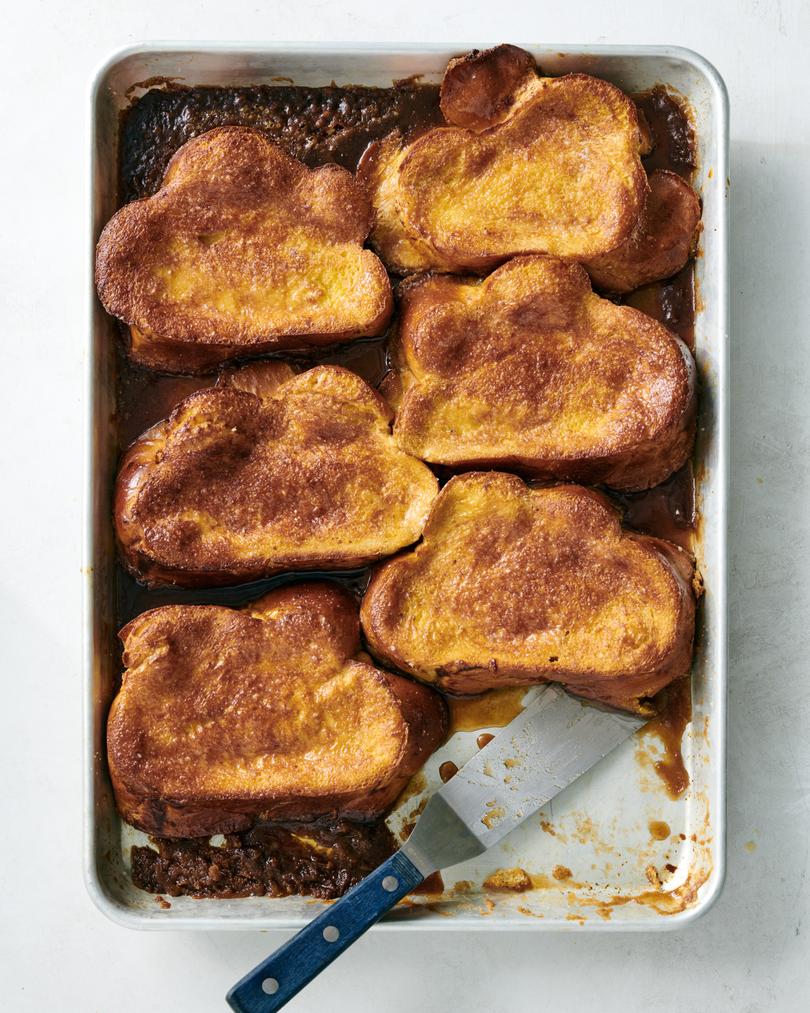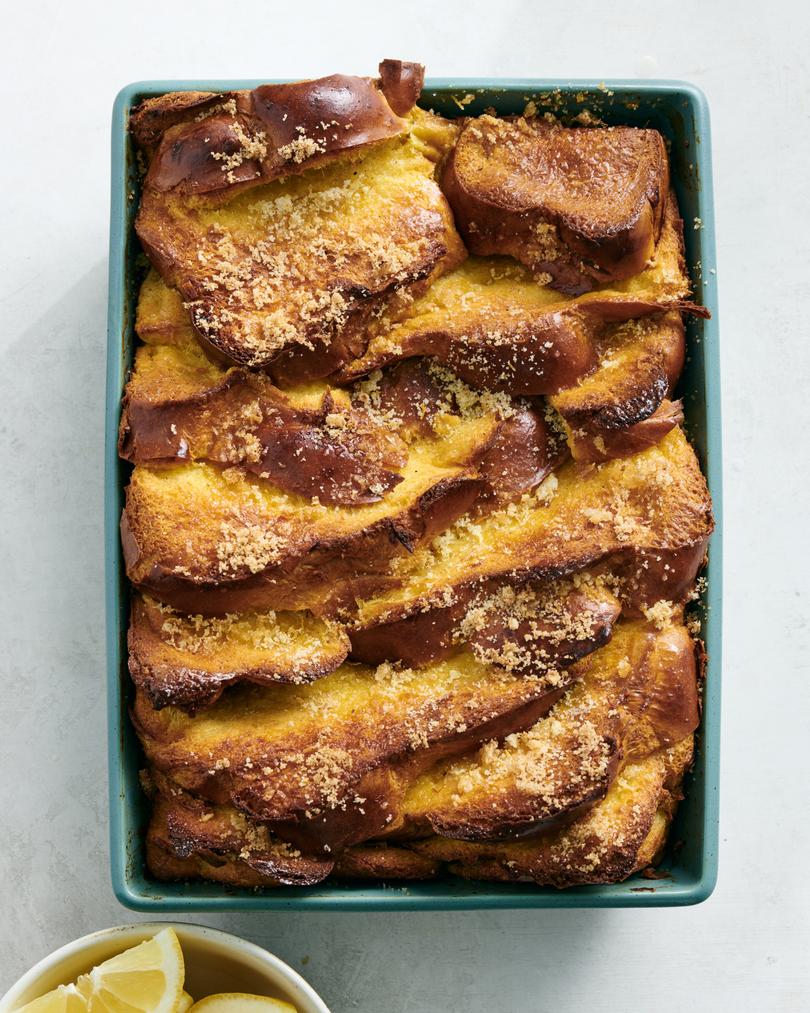The New York Times: Two French toast recipes to make Mother’s Day brunch unforgettable

Humans have been rehabilitating rock-hard, stale loaves into edible food since bread was invented. But the recipe that has become irrevocably rooted in American breakfast culture is French toast.
Based on the French “pain perdu,” or lost bread, French toast is traditionally made from old, leftover slices softened in a mix of milk and eggs, then fried until golden and crisp on the outside and creamy inside.
While the dish may have originally been a way to rescue old bread, the costly milk, eggs and butter it calls for made it far from thrifty. In “The Oxford Companion to Food,” Alan Davidson writes that, although French toast is iconically represented as a strategy for using up stale bread, its expensive ingredients suggest it was “more frequently regarded as a delicacy.”
Sign up to The Nightly's newsletters.
Get the first look at the digital newspaper, curated daily stories and breaking headlines delivered to your inbox.
By continuing you agree to our Terms and Privacy Policy.Davidson’s list of historical variations includes an ancient Roman example from Apicius (using wine and honey); its Anglo-Norman cousin (served with almond milk); and their Spanish relation, torrijas (adorned with syrup and cinnamon). I’ve seen (and created) modern iterations that include peanut butter and condensed milk, streusel crumbs and pears, pumpkin spice and pecans.
But no matter how many extravagant ingredients you lavish on your French toast, the best versions are still made from days-old bread — or at least bread that’s been dried out in the oven or toasted (which adds a nice grilled flavour). Spongy, fresh bread would dilute the egg mixture with its moisture, while dehydrated bread would more thirstily absorb the custard, swelling and plumping voluptuously. It may take longer to soak dry bread, but it’s worth the wait. Assembling everything the day before and sticking it in the fridge overnight ensures maximum absorption and makes your morning easier, too.

Most classic recipes call for frying the soaked slices, but I gave that up years ago. Why stand over the stove frying soggy bread in an undercaffeinated state when your oven can do all the work? Besides, while the oven is on, it’s easy to throw in a pan of bacon to cook at the same time. Baking won’t give you the crisp fried crust; I compensate with a sprinkle of sugar, which caramelizes and turns crunchy as it bakes.
I apply the sugar differently in these two new recipes, to distinct but equally delicious results. I created them for my YouTube cooking show, “Shortcut vs. Showstopper”, where I demonstrate two versions of classic recipes, one simple but still stunning, the other a more complex variation designed for the maximum wow factor.
For the simple French toast, baked on a sheet pan, I lay the soaked sliced bread on top of a layer of brown sugar and butter. As the bread bakes, the sugar turns into a glossy, candylike crust that snaps when your fork cuts through to the soft, vanilla-infused center.
The showstopper version, inspired by a cloudlike soufflé, features a lemon-scented sugar sprinkled on top. During baking, the sugar singes and darkens in spots, while the bread puffs and turns golden. A cross between bread pudding and a fancy soufflé, this makes the most elegant of brunch dishes.
Either recipe would be a perfect thing to serve on Mother’s Day.
As to what kind of bread to start with, it depends on what texture you’re going for. An egg-enriched bread like challah becomes cakelike, with a tender, tight crumb. Open-textured bread, like brioche or even croissants, capture more air and end up lighter and fluffier. Regular firm white bread (pain de mie) holds its shape and stays very moist after cooking, while crusty breads like sourdoughs and baguettes retain a pleasant and satisfying chew.
The possibilities are endless. In fact, the flexibility of the dish may be the secret of its staying power. With basic ingredients that you can adjust to suit your mood and keep interesting every time, it’s no wonder French toast never gets stale.
RECIPE: Brown Sugar Sheet-Pan French Toast
By Melissa Clark
With a cracking, caramelized brown sugar crust topping and soft, custardy slices of challah, this sheet-pan French toast is sweet perfection all by itself, without the need for maple syrup or powdered sugar. Baking it on a sheet pan eliminates the need to stand at the stove, pan-frying slices in batches. And while the oven is on, it’s easy to throw in a pan of bacon as well. If you can plan ahead, it’s best to start this the night before; the longer the challah soaks in the cinnamon-scented egg mixture, the better and more cakelike the result.

Yield: 6 to 8 servings
Total time: 4 hours 45 minutes
Ingredients:
- 6 large eggs
- 2 1/4 cups/535 grams whole milk
- 2 teaspoons vanilla extract
- 1/2 teaspoon ground cinnamon
- 1/2 teaspoon fine sea salt or table salt
- 1 (1-pound) challah loaf, cut into 1-inch-thick slices
- 1 packed cup/210 grams dark brown sugar
- 1/2 cup/113 grams unsalted butter, melted
Preparation:
1. In a bowl, whisk eggs until well combined, then whisk in milk, vanilla, cinnamon and salt.
2. Place the bread in a rimmed sheet pan. Pour the mixture on top and flip the slices to coat with custard on both sides. Let bread soak in the refrigerator for 4 hours or overnight. Flip the bread again halfway through soaking (or about an hour before baking).
3. Heat oven to 375 degrees. Pour brown sugar and melted butter onto a baking sheet and use an offset spatula to help combine it into a smooth mixture.
4. Carefully place the bread on top of the sugared baking sheet, leaving any excess liquid in the other pan. Bake for 27 to 35 minutes, or until the tops are golden brown and puffed and the sugar is bubbling.
5. Serve immediately, with the crunchy brown sugar side facing up, and drizzle more of the pan syrup on top.
RECIPE: Lemon Soufflé French Toast
By Melissa Clark
Like a cross between bread pudding and a fancy soufflé, this golden, puffed French toast casserole makes for the most elegant of brunch dishes. Baking the challah slices before soaking gives a rich, toasty flavor and helps dry them out, allowing them to absorb maximum custard. Lemon zest and orange liqueur give this a deep citrus flavor that’s punctuated with nutmeg and a burnt sugar topping. Serve it on its own or with fruit on the side. And while this nicely sweetened breakfast doesn’t need any syrup or extra sugar, a squeeze of lemon adds just the right tang.

Yield: 6 to 8 servings
Total time: 5 hours 20 minutes
Ingredients:
- 1 (1-pound) challah loaf, cut into 1-inch-thick slices
- 1/2 cup/100 grams sugar
- 2 lemons, zest finely grated
- 6 large eggs
- 1 1/2 cups/355 grams whole milk
- 1/2 cup/120 grams heavy cream
- 1 tablespoon Grand Marnier or orange juice
- 1 teaspoon fine sea salt
- 1/4 teaspoon grated nutmeg
- 2 tablespoons melted unsalted butter, for the pan
- Lemon wedges, for serving
Preparation:
1. Heat oven to 375 degrees. Place challah slices in a rimmed baking pan and toast for 10 to 15 minutes until slices are golden brown (you don’t have to flip).
2. Meanwhile, add the sugar and lemon zest to a large bowl. Use your fingers to rub the zest into the sugar to create a lemon sugar. Reserve 2 tablespoons for later.
3. To the lemon sugar, add the eggs, whisking until well combined. Whisk in whole milk, heavy cream, Grand Marnier, salt and nutmeg, and whisk to combine.
4. Pour custard mixture on top of the toasted bread, then flip slices to coat both sides. Let bread soak in the refrigerator for 4 hours or overnight. Flip the bread once more halfway through soaking (or about an hour before baking).
5. Heat oven to 350 degrees. Butter a 2-quart casserole dish with the melted butter and sprinkle the bottom of the dish with half of the reserved lemon sugar. Arrange the soaked bread slices upright in the pan. Bake for 30 minutes, then sprinkle the remaining lemon sugar on top. Continue baking until French toast is puffed and golden on top, 20 to 30 minutes more. Serve with lemon wedges, for squeezing.
This article originally appeared in The New York Times.
© 2024 The New York Times Company
Originally published on The New York Times
